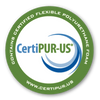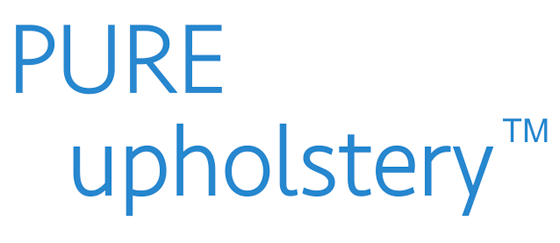Suspiciously CertiPUR- Don't be duped.
November 28, 2023

CertiPUR is a voluntary certification program for foam used in mattresses and upholstered furniture. It was established in 2010 to ensure that foam products meet certain standards for content, emissions, and durability. However, it is very unclear exactly what the standards are. The administrator of testing is The Alliance for Flexible Polyurethane Foam (AFPF) , a non-profit that was established in 2010 and shows Michael Crowell of Michigan as the Principal Officer. It has no website and no mention of members. There is a board of directors based on a Furniture Today post. They are all foam producers. Hmmm. I just saw that Zinus Foam Marketing Director was appointed as a board member in 2019. (Do you recall the recent Zinus foam mattresses with fiberglass debacle?) When one emails or calls Certipur, the same Michael Crowell answers the phone and replies to emails.
Certipur foam seems to be regarded by consumers, mattress manufacturers and upholstered furniture manufacturers as safer and more durable than foam that isn't CertiPUR certified as the CertiPUR website suggests that it is. In reviewing the CertiPUR website, it is devoid of transparency about the actual tests that it conducts. There are no reference to ASTM tests and required results for foam to be Certipur certified. Please, also, not that certification is now being referred to as CertiPUR-US.
Certipur foam focuses primarily on the emissions of volatile organic compounds (VOCs) from foam products and doesn't specify the criteria and test methods.They claim that the foam is made without heavy metals, phthalate and certain classes of flame retardants. The classes of flame retardants to which they refer as being banned in CertiPUR foam are already banned for use in mattresses and upholstered furniture here in the U.S. But there are classes of flame retardants that haven't been banned. The website doesn't state that CertiPUR must be completely free of chemical flame retardants.
Both Graco and Medley Home CertiPUR foam were tested last year and contained lead. Researchers tested new mattresses for fiberglass from Sealy, Modway and Zinus, and a Graco crib and toddler mattress. All four mattresses tested positive for lead and were advertised as meeting Certi-PUR-US standards. I don't blame the product manufacturers. It isn't their responsibility to test the foam. IIt is CertiPur's.
CertiPUR foam is a voluntary certification program administered by The Alliance for Flexible Polyurethane Foam (AFPF), a dubious industry trade association that was created at the same time that CertiPUR was and is helmed by the same person. Self-regulation raises concerns about potential conflicts of interest. as well as possible greenwashing. On the CertiPUR website , under legal notices, it reads that the CertiPUR-US® name and logo are registered certification marks of Alliance for Flexible Polyurethane Foam, Inc., a nonprofit organization.
Its lack of transparency regarding the specific criteria used for certification concerns me. The detailed standards and testing methods are not readily available , which leads me to skepticism about the thoroughness and reliability of the certification process. The lack of fees noted on the website to have the foam tested and certified is odd, also. There are other certifications available for foam, such as the Global Organic Textile Standard (GOTS) or the Global Organic Latex Standard (GOLS) and Oeko-tex which have more stringent requirements for organic and natural materials. CertiPUR foam is not as comprehensive as these alternatives and consumers seeking a high level of assurance of purity should consider other certifications. The bottom line is that it is still a petrochemical and doesn't ban foams with flame retardants.
At this moment, it appears to be a U.S. foam industry created marketing campaign that product manufacturers are either buying into or are knowingly promoting to consumers as safer than foam that is not CertiPUR, now, CertiPUR-US certified foam.
Leave a comment




